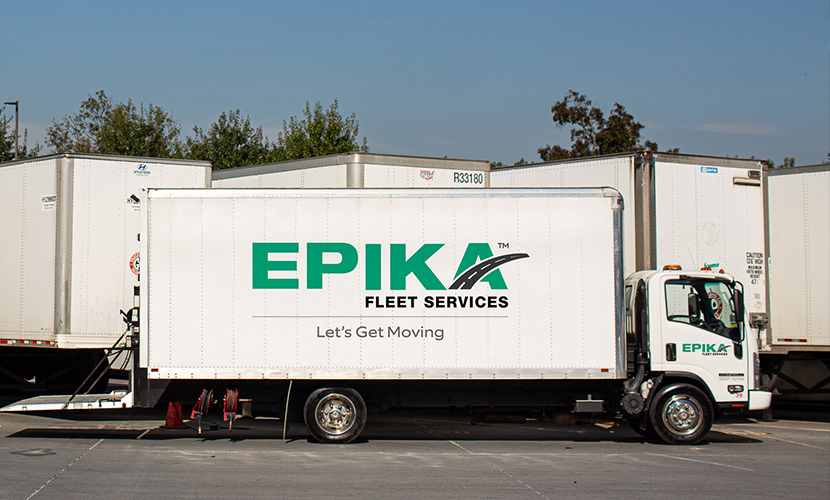Passive vs Active GPS: What’s The Difference for Fleet Vehicles?

Whether you have a couple of vehicles you use for local services or a fleet of hundreds across the nation, managing a fleet is a huge challenge. Foremost among those challenges is one of the most obvious: knowing where your vehicles are.
Think about it: knowing where your vehicles are is critical to every other aspect of your business. Are your drivers moving on time and on schedule? Are there unexpected delays? Is a vehicle you expected to be on route suddenly stopped? Is a vehicle undergoing maintenance or returning to the yard? Are vehicles moving when they shouldn’t be?
In the old days, knowing where a vehicle was involved two things: data points from check-ins with drivers and predictive tracking. You would ask where a driver was, knowing their route and the speeds along the way, and you could make predictions about where they would be in an hour, in two, and so on.
Of course, variance in traffic, unexpected delays, and other issues meant that these predictions would decay rapidly. Unless a driver was proactive in reporting, too, you would never know until you check back in.
Fortunately, modern technology has made all of this a concern for the past. With GPS tracking, you can have a complete picture of where every vehicle in your fleet is at any given time from a central software dashboard. Every vehicle can have a status: on duty, off duty, out of service, on maintenance, etc. Anything unexpected can be flagged, and issues can be investigated, all quickly and easily.
GPS tracking is a fantastic tool, but it’s not simple. There are multiple different kinds of GPS tracking for fleet vehicles, and knowing their pros and cons can help you decide which you need for your fleet. So, let’s dig in and learn more about it.
How GPS Tracking Works
GPS is the Global Positioning System, and it’s a modern marvel of technology. It’s a world-spanning network of satellites in space using radio signals and triangulation to pinpoint the location of GPS-equipped devices virtually anywhere in the world. The carefully maintained GPS network feeds control centers precise information about time, the exact specific location of the satellites, and even the speed of the radio signals, all to enable mathematical determinations of ground- and air-based positioning. GPS can track everything from the cell phone in your pocket to the units installed on your fleet vehicles.
For a fleet manager, GPS tracking is pretty simple. You don’t need to know any of that math or any complex calculations. All you do is buy GPS tracking devices and install them on your vehicles. From there, you connect them to the software you use to manage your fleet.
If your platform doesn’t support GPS, you get a new platform; if it supports GPS but not those devices, you get a new platform, or you return and get the right devices. The connection between the GPS tracking devices, the satellite network, and the software on your devices handles just about everything else automatically.
What Can You Do with GPS Tracking?
For fleets, the benefits of GPS are incredible.
By knowing where your vehicles and drivers are, you can assign the best vehicle to any given task or route.
Coupled with real-time traffic information, GPS allows you to dynamically re-route vehicles away from congestion, accidents, construction, and other slowdowns.
Coupled with other information like fuel consumption and fill-ups, average speeds, and weather conditions, software and machine learning can identify when a vehicle may need maintenance even before its onboard systems do.
Many fleet insurance providers offer discounts on premiums that cover vehicles equipped with GPS tracking devices; some report savings of as much as 35% off premiums.
You can detect unauthorized operations, whether it’s a driver who keeps going after their shift has ended or a vehicle being stolen out of a yard and driven off; it even helps with asset recovery!
Geofencing technology can alert you if a vehicle leaves the designated operating zone, which can indicate all manner of problems that need your attention, from route changes to unexpected problems to theft.
Start and stop times verified by GPS can validate (or identify problems with) the timekeeping provided by the onboard Electronic Logging Device.
With these benefits, GPS tracking is an excellent feature to have with any fleet management system.
That said, some of these benefits may not be available to all GPS tracking systems. The reason is that there are actually two kinds of GPS trackers: passive and active. The differences between them affect the features they can provide. So, what are the differences?
What is Passive GPS?
Passive GPS trackers are simple devices that can best be described as “a receiver, not a transmitter.” They receive and track information about the truck’s location from the GPS network, and they do so automatically as long as they have power and the right configuration. This may mean they put a small draw on the truck’s battery at all times or, more commonly, switch off when the truck is powered down.
Passive GPS is more like a historical record than an active tracker. When the truck returns to base (or, with more modern models, when it syncs with the driver’s tablet), the GPS tracking history is synced and downloaded to your fleet management system. This might be a daily or weekly occurrence, but the key is this: it’s not real-time.
You may have noticed how many of the benefits above rely on real-time knowledge of where your fleet vehicles are. Those benefits are not available for passive GPS tracking because passive tracking does not provide real-time information about the vehicles equipped with the devices.
So, if a lot of the benefits of GPS tracking don’t apply to passive trackers, why are they available? They have a few benefits.
- They’re cheaper than active trackers. This is both in terms of the cost to purchase the units and also in terms of the overhead necessary to configure them, sync them to your system, and keep them updated. They also don’t draw as much energy as active trackers and so put less strain on the vehicle’s electrical system.
- They usually still qualify for insurance premium reductions as GPS tracking, despite not providing the same array of benefits that would be useful to the insurance company. That said, this isn’t always the case; the reduction in premiums may be smaller, or the insurance company may specify active tracking. Be sure to check with your insurance provider before investing in your GPS devices first.
- Since passive GPS trackers don’t send signals out to the GPS network, they are lighter weight and have fewer points of potential failure.
There are some drawbacks, too, of course. The biggest is that the lack of active tracking means you can’t utilize that information dynamically and in real-time. They are also reliant on access to cell towers and other available GPS signals, so in remote areas, they can lose signal.
What is Active GPS?
If passive GPS is a receiver, active GPS is both a receiver and transmitter. It doesn’t just receive signals from the GPS network to detect where it is; it also broadcasts the responses back to the global information network, where your fleet management platform receives it and maintains a real-time depiction of where your vehicles are at any given time.
These devices often use a combination of GPS radio signals and cell signals to transmit this information. Many of the oldest GPS units still use 2G/3G, but modern versions are equipped with 5G signal for as robust and fast connections as possible.
The benefits over passive GPS are pretty clear.
- Since you always know where the tracker is, you can use that real-time location information for a variety of useful benefits, including those listed above.
- Fast and reliable data allows real-time checking. It also reduces the need for onboard storage since the data can be synced to the cloud.
- Additional telematics data, ranging from engine temperature to computer status codes to driver shift status, can all be transmitted alongside the GPS location.
- As full trackers, you can take advantage of the deepest possible premium discounts that your fleet insurance carrier offers.
That said, there are downsides to active trackers that make some fleet managers opt for the passive option.
First and foremost is the expense. Active GPS trackers are more complicated machines, and that means they are more expensive to purchase. That doesn’t tell the full story, though; unlike passive GPS trackers, active trackers need access to cellular networks, which means they usually require a monthly subscription fee. Depending on the number of vehicles you need to track, this expense can add up quickly.
Active trackers are also more power- and signal-hungry. They can, in extreme circumstances, drain a truck’s battery. They also require a stronger and more consistent signal to transmit accurately, and while most have graceful fail-overs and retry signals for when they lose connection, the cheapest models might not be very good at it.
What About Hybrid GPS?
Hybrid GPS tracking is another option. While it might not seem like there’s room between “does have” and “doesn’t have” a transmitter, there’s a third option.
Hybrid trackers are essentially passive GPS trackers 90% of the time. However, they do have transmitters in them, usually ones that work at low frequencies and only in certain situations. They are programmed to monitor their conditions, and if they exceed certain limitations, they switch to active mode to broadcast their location.
Why is this useful?
- By establishing a geofenced area, the tracker can operate passively during normal operation, but if the vehicle leaves that boundary, the tracker switches to active and broadcasts.
- The tracker can be sent an activation signal. If a vehicle is reported missing or stolen, you can broadcast that signal, and the tracker will respond with its location, switching to active mode until you turn it off or it runs out of juice.
- More active-leaning hybrid trackers can be set to work actively when they have strong, fast connections to the cell network, but instead of struggling with bad connections, switch to passive until a good connection is restored. This can, in some cases, also avoid the monthly fee for access to the cell network.
Hybrid trackers are often preferred over purely passive trackers. They’re mid-way in terms of expense as well and can qualify for insurance discounts where purely passive trackers don’t.
Are There Laws Regarding GPS Tracking?
Yes and no.
Currently, there are no mandates that require or prohibit tracking. Federal law doesn’t address the issue at all.
State laws, meanwhile, vary. Some places require that you get consent before tracking, like California. Of course, you can simply make that consent part of your employee requirements, but it’s part of an awareness measure. Similarly, Connecticut requires that you inform your drivers that you track the vehicle. If you’re a global company operating in Europe, your tracking needs to comply with GDPR as well.
The issue gets trickier if you’re trying to track employee vehicles on company time. You can still do this, but you need much more explicit consent.
Tracking fleet vehicles is hugely beneficial to companies, but it does require some awareness of the privacy issues involved. This is why a lot of fleet tracking systems, including GPS trackers and ELDs, usually have an option to toggle tracking off when the driver is off-duty. This way, you ensure that you’re tracking the truck, not the person.
Is GPS Tracking a Good Idea for Your Fleet?
Almost definitely, yes. Fleet tracking provides so many benefits to a modern company that there are very, very few valid reasons not to use it. The insurance premium reduction alone will usually pay for the system in short order; optimizations in routing and tracking are the icing on the cake.
The only question is, what tracking system should you use? For that, there’s no easy answer. Some fleets benefit from passive tracking; others can only get where they are with active tracking. Whatever the case, though, one thing is sure: with Epika, we can help you out.
Whether it’s installing and configuring GPS, providing proactive maintenance when the systems alert you to the need, or just helping keep your business moving, we’re here for you. Just click here to find a service provider and get started.




